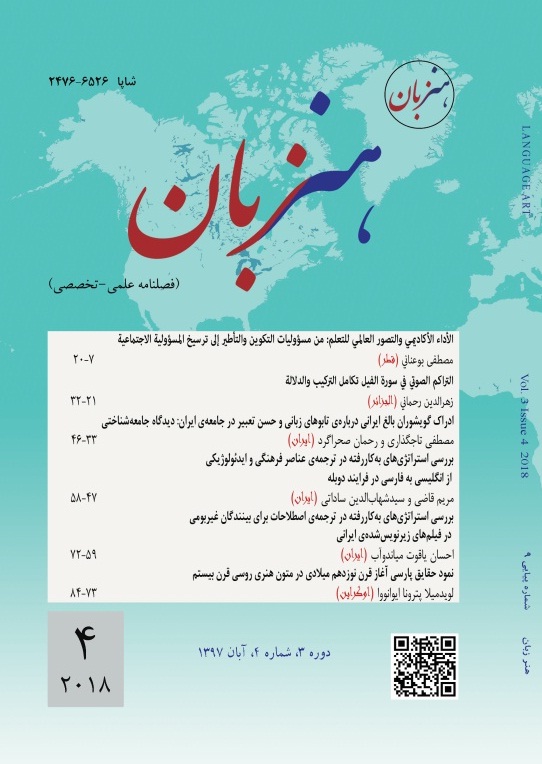ادراک گویشوران بالغ ایرانی دربارهی تابوهای زبانی و حسن تعبیر در جامعهی ایران: دیدگاه جامعهشناختی
DOI::
https://doi.org/10.22046/LA.2018.21کلمات کلیدی:
مرگ، حسن تعبیر، جامعه، ادراک، جنسیت، تابو.چکیده
در سالهای اخیر، خطمشی تحقیق در مورد جنبههای اجتماعی و عملگرا درمورد زبان و استفاده از زبان بهشدت افزایش یافته است. در این راستا تابوها و همچنین حسن تعبیر، باتوجهبه نقش مهمی که در تأثیر بر تعامل میان مخاطبان دارند، موضوع پژوهش در جوامع و فرهنگهای مختلف از جنبههای متنوع زیادی بوده است. بهاینترتیب، مطالعهی حاضر تلاشی برای کشف ادراک گویشور بالغ ایرانی از تابوهای زبانی و حسن تعبیر در جامعهی ایران است. برای این منظور، نمونهای مناسب از ۴۸ گویشور بالغ ایرانی، 2۴ مرد و 2۴ زن از شیراز، ایران برای شرکت در این مطالعه انتخاب شد. محقق با همهی آنها مصاحبه کرد و پاسخهای صوتی آنان را برای تحلیل بیشتر و تعیین ادراکات آنها درمورد تابوهای زبانی و حسن تعبیر در جامعهی ایران ثبت کرد. یافتههای این یافته نشان داد: ۱. اکثر شرکتکنندگان معتقد بودند که جنسیت توهینآمیزترین موضوع در جامعهی ایران است؛ ٢. همهی شرکتکنندگان معتقد بودند که مردم باید در صحبتهای خود از حسن تعبیر استفاده کنند و بهخصوص در موقعیتهای رسمی، باید مراقب صحبتهای خود باشند؛ ٣. اکثر گویشوران بالغ ایرانی معتقدند خشم مهمترین عاملی است که منجربه استفاده از کلمات تابو میشود و ۴. اکثر شرکتکنندگان، چه مرد و چه زن، گفتند که در گروههای مختلط جنسی دربارهی تابوها بحث نمیکنند.

